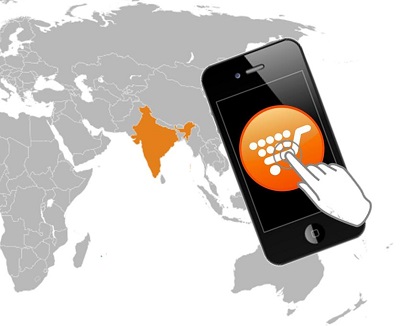In India, the vast majority of consumers are turning to m-commerce to buy their products and services online.
E-commerce has always been somewhat unpredictable in India, but Indian mobile shopping appears to be taking off with a vengeance. For instance, despite the fact that Flipkart broke the 100 million user mark two months ago, its valuation recently fell by another 38 percent.
That said, while online shopping may be somewhat unstable, mobile commerce looks much more steady.
Current Indian mobile shopping trends suggest that the market will bring in $48 billion in 2020. Furthermore, recent Regalix research indicates that 83 percent of Indian consumers prefer to use their smartphones. This makes m-commerce the most popular online shopping channel in the country.
 The same research showed that mobile commerce users in India are primarily within certain age groups. Interestingly, people between the ages of 25 and 34 years were more likely to use their smartphones to shop than those from 18 to 24 years old. In fact, 90 percent of online shoppers in that first age category prefer mobile.
The same research showed that mobile commerce users in India are primarily within certain age groups. Interestingly, people between the ages of 25 and 34 years were more likely to use their smartphones to shop than those from 18 to 24 years old. In fact, 90 percent of online shoppers in that first age category prefer mobile.
Overall, Indian mobile shopping statistics show that 1 in 3 people in the country is shopping with a smartphone.
The Regalix report showed that exactly one third – 33 percent – of shoppers in India shop over mobile commerce at least one time per month. This option provides them with a broad spectrum of options and allows for convenient price comparison no matter where the consumer happens to be.
Another 28 percent of Indian shoppers shop even more frequently than that, once per week. One in four consumers – 25 percent – shop over mobile phone at least once per three months. Only 14 percent of participants said they shopped online over their mobile devices once per year.
One noteworthy Indian mobile shopping trend pointed out by the Regalix report had to do with who was shopping. Men appeared to be using mobile phones to shop more than women. Forty four percent of women were shopping at least once per month over mobile. At the same time, 63 percent of men were buying products and services over their smartphones.

 November 11 is Veterans day in the United States. This makes it unlikely to be a great date to try to carry Singles Day over to this part of the world. That said, the company is hoping to keep the shopping momentum going in the US as the holiday season follows closely on its heels.
November 11 is Veterans day in the United States. This makes it unlikely to be a great date to try to carry Singles Day over to this part of the world. That said, the company is hoping to keep the shopping momentum going in the US as the holiday season follows closely on its heels.